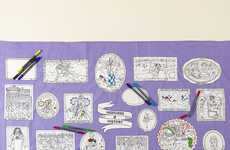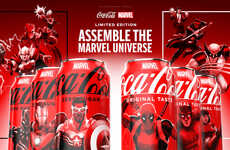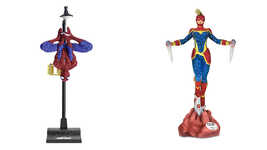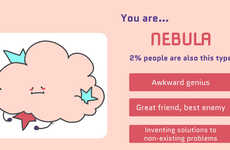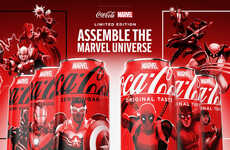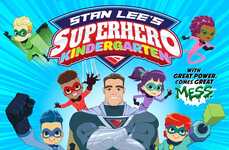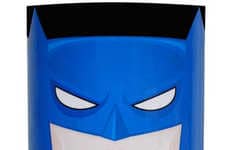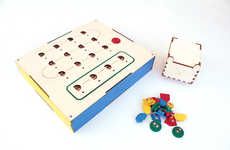
Kaycie D Transforms the Periodic Table of Elements into Heroes
Kyle Towers — February 14, 2013 — Social Good
References: kcd-elements.tumblr & neatorama
Kaycie D. takes the periodic table of elements and transforms each one into a superhero character. Come to think of it, the elements have always possessed heroic-sounding names.
She imagines what traits and powers each character would possess if it represented that element. Helium is exemplified by a floating character as it is the lightest gas element.
With each character she has created, she also provides a summary of the element and sometimes reveals why it was named as such. Some of the characters include Hydrogen, Carbon and Lithium.
The periodic table of elements was created and was part of Kaycie's thesis project at school. It is a playful spin on a knowledge based chart that can be fairly dry for students, so it will hopefully inspire learning.
She imagines what traits and powers each character would possess if it represented that element. Helium is exemplified by a floating character as it is the lightest gas element.
With each character she has created, she also provides a summary of the element and sometimes reveals why it was named as such. Some of the characters include Hydrogen, Carbon and Lithium.
The periodic table of elements was created and was part of Kaycie's thesis project at school. It is a playful spin on a knowledge based chart that can be fairly dry for students, so it will hopefully inspire learning.
Trend Themes
1. Superhero-inspired Educational Materials - Opportunity for creating superhero-themed educational materials to make learning more engaging and exciting for students.
2. Creative Interpretations of Knowledge Charts - Room for innovative approaches to presenting educational charts and diagrams to enhance comprehension and interest.
3. Characterization of Academic Concepts - Potential for personifying academic concepts to make them more relatable and memorable for students.
Industry Implications
1. Education - Opportunity for educational institutions and publishers to develop engaging and visually appealing learning materials.
2. Creative Design - Potential for designers and artists to create unique and imaginative interpretations of academic concepts and knowledge charts.
3. Entertainment - Room for collaboration between the education and entertainment industries to develop educational content that is both informative and entertaining.
2.6
Score
Popularity
Activity
Freshness

